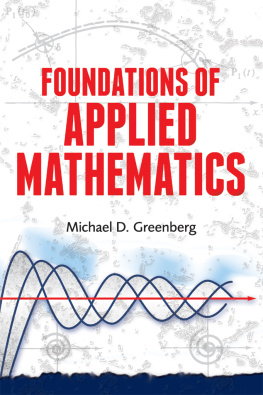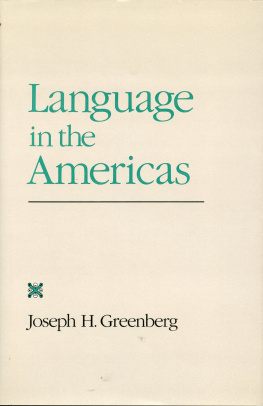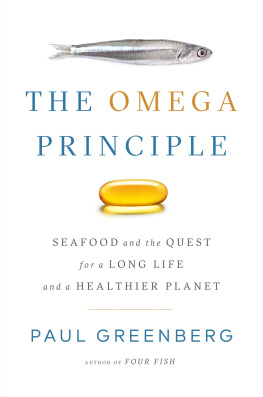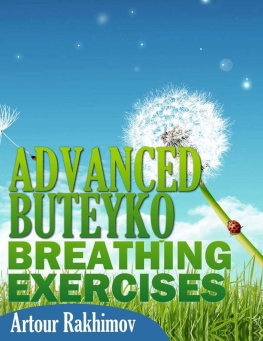Buteyko Breathing Method
Unique breathing exercises from over 100 diseases and health conditions
Self-help guide
Samuel Greenberg
Text Copyright 2020
Warning the author is not responsible for any undesirable consequences in case of the use of medical products without consultation with the doctor. Every attempt was made to provide accurate data. All information provided in this book does not replace medical advice.
Disclaimer notice:
Please note information in this book for educational purpose only.
Every attempt has been made to providing accurate and complete information. Readers recognize that creator is not participating in rendering legitimate, money related or proficient guidance.
By reading this book reader agrees that under no circumstances are the author is not responsible of direct or indirect loses as a result of using information in this book including - but not limited - any possible errors, omissions and inaccuracies.
Annotation
Our breathing is an amazing tool for healing the body, with its help the sages of India, China, and Ancient Egypt have been treating diseases for thousands of years. Respiratory practices affect all organs and systems of the body, regulate their chemical balance and organize the rhythm. Many practices are still known only to the elite, but some of them have been rediscovered by modern health researchers.
This book contains unique material: the most effective breathing exercises according to the Buteyko method. The essence of the Buteyko method is shallow breathing. The less you breathe in the air, the faster the healing of the body takes place. The better you can control your health and manage your state of wellness.
All material is presented as clearly as possible, accessible and on the same model, which allows you to quickly find the necessary exercises and, without wasting time on reading and understanding, immediately start classes. In the book you will find step-by-step instructions with photos that will help you unlearn deep breathing, as well as learn how to breathe superficially, to get rid of more than 100 diseases and medical conditions and regain health and youth.
Table of contents :
Chapter 1. A complete list of diseases that the Buteyko method treats
- Headaches, convulsive syndromes.
- Dizziness, fainting.
- Sleep disturbance.
- Noise in ears.
- Memory impairment.
- Fast fatigability.
- Irritability.
- Short temper.
- Poor attention span.
- Feeling of causeless fear.
- Apathy, decreased vitality.
- Hearing impairment.
- Paresthesia (loss of sensitivity, more often limbs).
- Wince in a dream.
- Tremor and teak.
- Visual impairment.
- An increase in senile hyperopia.
- Flickering in the eyes, a net in front of the eyes.
- Increased intraocular pressure.
- Soreness when moving the eyes up and to the side.
- Rolling strabismus.
- Radiculitis.
- Osteochondritis.
- Crisis type diencephalic and dystonic, sweating, chilliness, causeless chills.
- Instability of body temperature such as thermoneurosis.
- Signs of hyperthyroidism, dystyroidism (defective functioning of the thyroid gland).
- Obesity.
- Exhaustion.
- The phenomena of pathological menopause.
- Toxicosis and pathology of pregnancy.
- Fibromyomas.
- Mastopathy (fibrocystic breast disease)
- Impotence.
- Frigidity.
- Infertility.
- Erosions and polyps of the cervix.
- Painful periods and cycle disruption.
- Miscarriages
- Spasms of the larynx and bronchi (asthma attacks).
- Dyspnea.
- Mouth breathing.
- No pause after exhaling at rest.
- Respiratory arrhythmias.
- Frequent deep breathing.
- Periodic feeling of lack of air.
- Sensation of limited mobility of the chest.
- The feeling of inferiority of the breath.
- Fear of stuffiness.
- Rhinitis by the type of vasomotor.
- Loss of smell.
- Laryngitis, sinusitis, frontal sinusitis.
- Tendency to colds (bronchitis, flu).
- Cough dry or with sputum.
- Dry mouth or nasopharynx.
- Radiation damage.
- Emphysema.
- Chronic pneumonia
- Bronchiectasis and spontaneous pneumothorax.
- Pain in the chest of a different nature.
- Violations of posture.
- Chest deformity.
- Tachycardia.
- Extra systole.
- Paroxysmal tachycardia.
- Spasms of the vessels of the heart, limbs, brain, kidneys.
- Protein in the blood.
- Bed-wetting.
- Oxalates, urates in the urine.
- Nocturia (frequent urination at night).
- Coldness of limbs and other areas.
- Pain in the heart.
- Angina pectoris.
- Hypertension.
- Hypotension.
- Phlebeurysm (varicose veins).
- Marbling skin.
- Vascular fragility (bleeding gums, nosebleeds).
- Sensations of pulsations in various areas (pulsating tinnitus).
- Myocardial infarction.
- Stroke.
- Increased blood coagulation.
- Thrombosis (thrombophlebitis).
- Hypercholesterolemia.
- Eosinophilia.
- Anemia.
- Lowering, increasing appetite.
- Salivation.
- Loss of taste or perversion.
- Pain in the pit of stomach.
- Colitis (constipation, diarrhea).
- Abdominal pain.
- Heartburn.
- Burping.
- Nausea, vomiting.
- Flatulence.
- Gastritis and peptic ulcer of the stomach and duodenum.
- Fast physical fatigue.
- Muscle pains.
- Muscle cramps.
- Twitching of various parts of the body.
- Amyotrophy (muscular atrophy).
- Pain in tubular bones.
- Dry skin.
- Pustular rash.
- Itchy skin.
- Eczema.
- Psoriasis.
- Pallor.
- Acrocyanosis.
- Angioedema.
- Pitting edema of the face.
- Lipomatosis
- Osteophytes and salt deposition.
- Deposits of cholesterol on the skin.
- Alcoholism.
- Addiction, including hormonal dependence.
- HIV (not AIDS yet).
Chapter 2. Introduction to breathing methods
Sages at all times said: in order to know God, a person must first ... learn to breathe! Or rather, improve your breathing and only in this case, a person will be able to confidently manage not only his own words and emotions, but also health and even fate.
Therefore, in the history of mankind, the process of breathing and conscious work with it has been given attention by all, without exception, religious traditions and systems of spiritual practices.
So, the Torah tells how God breathed life into Adam, thereby reviving him. It also says that breathing returns to God after a person dies.
In many world cultures, breathing concepts are also key. Indeed, in many languages the words "spirit", "soul" and "breath" have a common origin. From time immemorial, people have distinguished breathing as the main property of all living and animated.
In Chinese philosophy, one of the main categories of "qi" is defined as "air", "breath", "energy". The ancient Chinese believed that qi permeates everything in this world and connects everything together.
In Indian medicine, the concept of "prana" literally in Sanskrit means "life", "breath". And yogis are sure that prana permeates the entire universe.
And from ancient Greek mythology, the word "psyche", which translates as "soul", "breath", has migrated to the arsenal of world philosophy, psychology and medicine.
Respiratory practices themselves began many thousands of years ago in the East: in India - Pranayama, in China - Qi-gun, in Central Asia - the Sufi exercise system, in Tibet - the breathing practices of Vajrayana Buddhism. All these eastern teachings penetrated the West only in the 20th century. And in XXI became a vital necessity.
Next page









